Pics of the Tropical Rainforest Pics of the Tropical Rainforest Easy to Draw
In the previous article we covered plants in the tropical rainforest. On this page, you'll find a tropical rainforest plants list, with pictures and information on individual plant species.
This article is part of our Rainforest Series.
- Download free rainforest worksheets here: Rainforest Worksheets.
- You can view a huge list of rainforest animals on this page: Rainforest Animals: The Ultimate Guide
Tropical Rainforest Plants Information
The world's tropical rainforests are home to an incredible number of plants. The Amazon Rainforest alone provides a habitat for over 40,000 plant species!
The hot, humid climate of the world's tropical regions provide ideal conditions for plant life.
However, even in a rainforest there is competition for sunlight and nutrients; plants have to adapt to find their place in the ecosystem.
In order to do this, some plants grow faster, some have bigger leaves, and others evolve better defences against predators.
As we'll find, some rainforest plants have even co-evolved with animals, forming relationships that are beneficial for both.
In this list of tropical rainforest plants, some of our chosen species are very big, some are very beautiful … and some are even dangerous (if you're an insect)!
Tropical Rainforest Plants List
Epiphytes
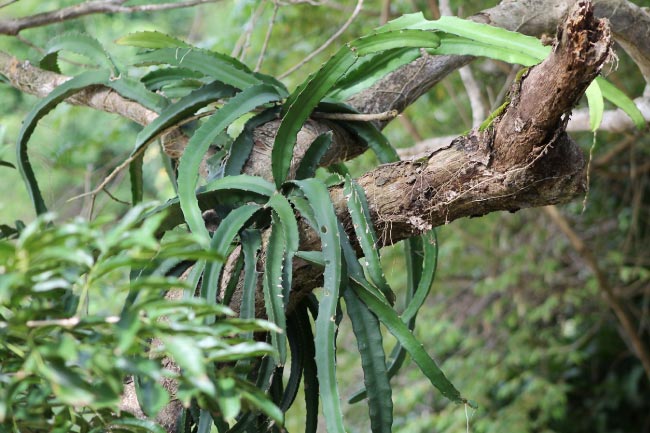
Epiphytes are plants that live on other plants. They don't have roots in the ground, and have evolved various strategies for obtaining water and nutrients. Sometimes a single tree can be home to many different epiphyte species, together weighing several tonnes. Epiphytes even grow on other epiphytes!
Many of the plants in this tropical rainforest plants list are epiphytes.
Bromeliads
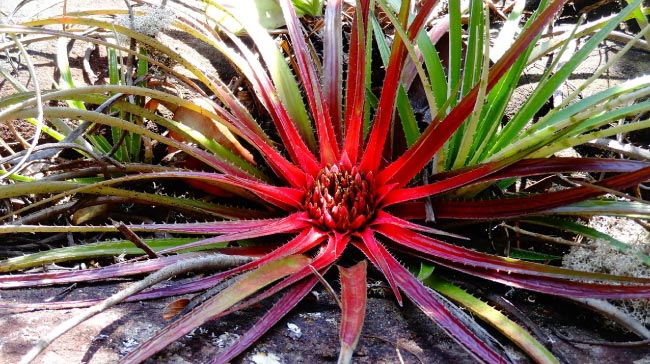
The most common epiphytes are bromeliads. Bromeliads are flowering plants whose long leaves are arranged in a rosette. They attach themselves to the host tree by wrapping their roots around its branches. Their leaves channel water into a central 'tank'.
A bromeliad's tank is a habitat in itself. The water is used not only by the plant, but also by many rainforest animals. Birds and mammals drink from the tank. Tadpoles grow there, and insects lay their eggs in the pond.
Orchids
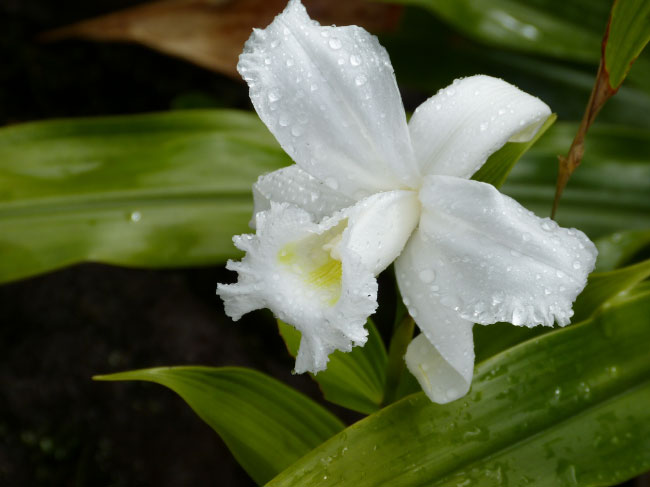
There are many types of rainforest orchid, and we'll look at some individual species below. Orchids in the rainforest are often epiphytes. Some have specially adapted roots that enable them to capture water and nutrients from the air. Other orchids have roots that spread out over the branch of the host tree, capturing water without needing to bury into the ground.
Açai Palm (Euterpe precatoria)
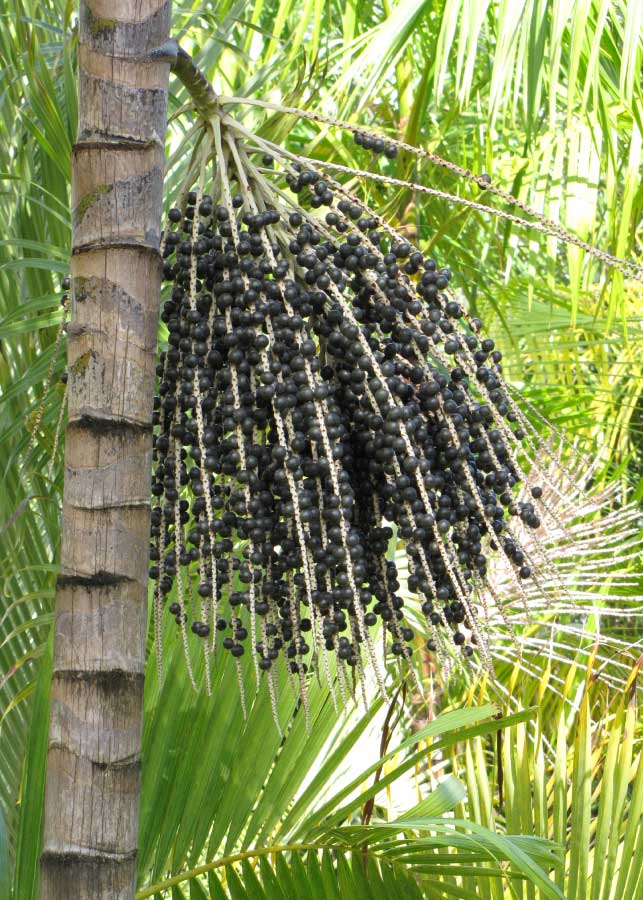
The açai is thought to be the most common tree in the Amazon Rainforest. Despite this, it still makes up only 1% (5 billion) of the 390 billion trees in the region. Its fruit is edible, and an important food in the Amazon region.
Carnauba Palm (Copernicia prunifera)
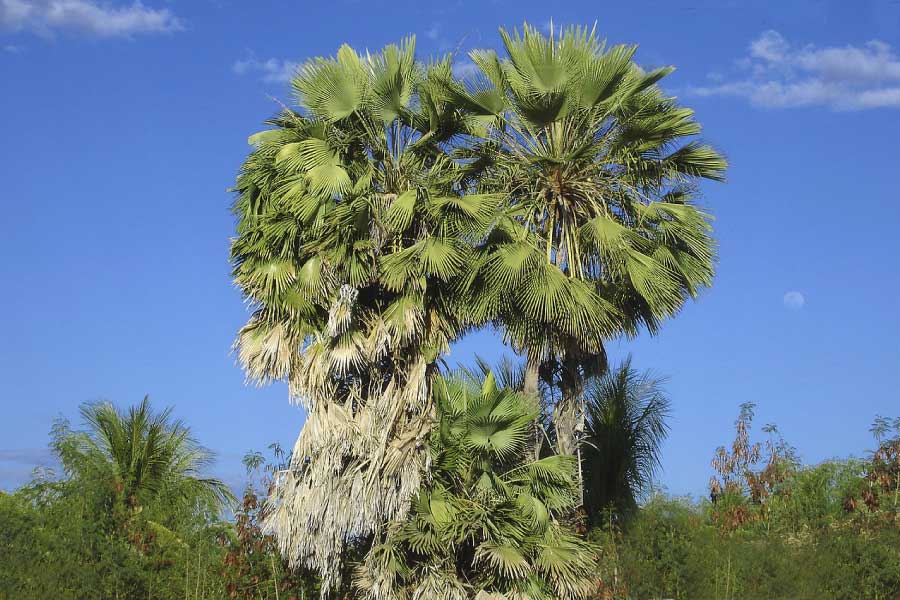
This Brazilian palm tree is also known as the 'tree of life' because it has so many uses. Its fruit are eaten, and its wood used in building. It is best known as the source of 'carnauba wax', which comes from the tree's leaves.
Carnauba wax is used in car polish, lipstick, soap, and in many other products. It is even rubbed on surfboards to help them slip through the water faster!
Rattan Palm
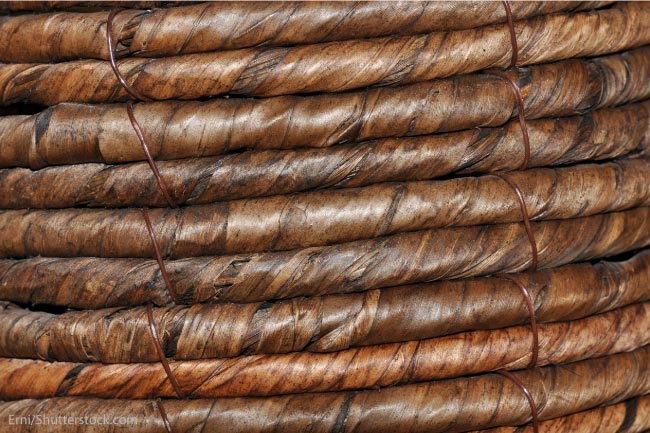
There are over 600 species of rattan palm. They grow in African, Asian and Australasian rainforests. Rattans are vines; long plants which are unable to support themselves. Instead, they wrap themselves around other trees. Hooked spines on their stems allow them to climb up the other trees towards the sunlight. Rattans are harvested and used in furniture construction.
Walking Palm (Socratea exorrhiza)
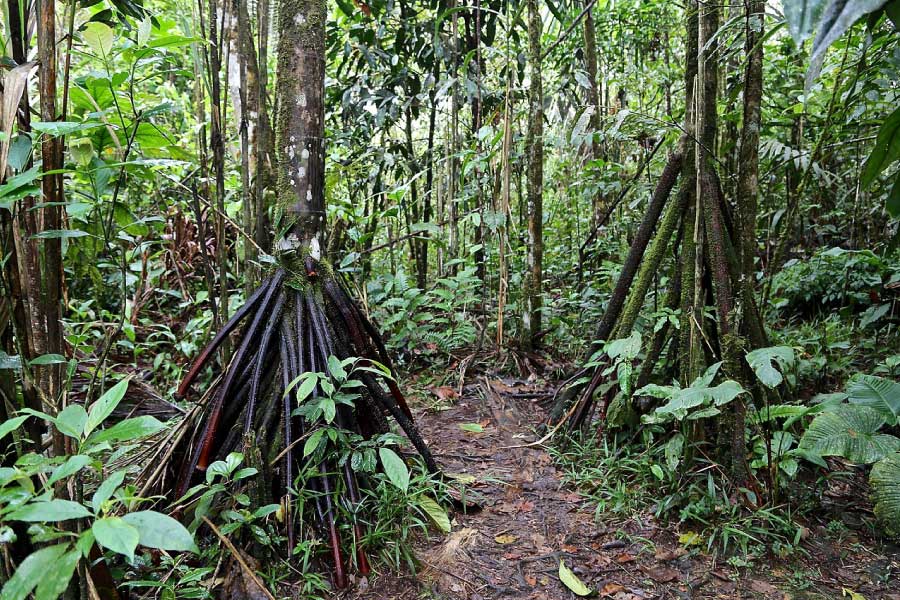
Walking palms grow in the tropical rainforests of Central and South America. They have stilt roots that project out of the trunk above the ground (see our Plants In The Tropical Rainforest article to find out more about stilt roots).
It was once thought that these roots enabled the trees to 'walk' to a new position if it was knocked over by another tree. Scientists now think that the roots simply improve the tree's stability.
Amazon water lily (Victoria amazonica)

The Amazon water lily is an aquatic plant that grows in the lakes and rivers of South American rainforests. Its huge leaves can be up to 3 metres (9.8 ft.) in diameter. There are rows of sharp spines on the undersides of the leaves. These deter rainforest animals such as manatees from eating them.
Rubber Tree (Hevea brasiliensis)
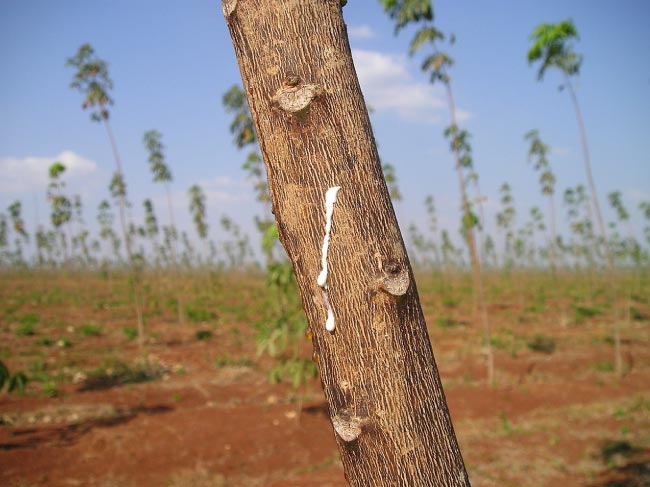
The rubber tree, which was first found in the Amazon Rainforest, is now also grown in tropical areas in Asia and Africa. The tree is harvested for latex, a milky fluid found in vessels in the tree's bark. These vessels are opened and the latex which runs out is collected in buckets. This is known as 'rubber tapping'.
Latex is used to make natural rubber. Natural rubber has many uses, including car tyres, hoses, pulley belts and clothing.
There are over 1.9 million rubber trees growing in the Amazon Rainforest.
Bougainvillea
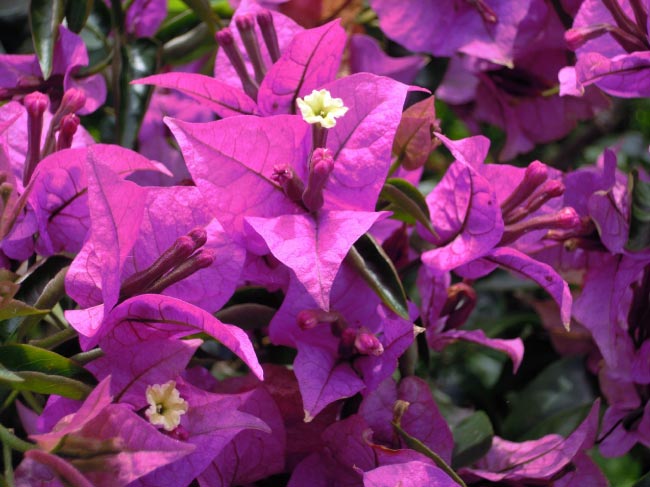
A colourful entry to the tropical rainforest plants list, Bougainvilleas are native to South America. They are grown as ornamental plants in other areas. Bougainvilleas are well-known for their beautiful flower-like leaves, which grow around the actual flower. These thorny plants grow as vines and shrubs.
Indian Timber Bamboo (Bambusa Tulda)
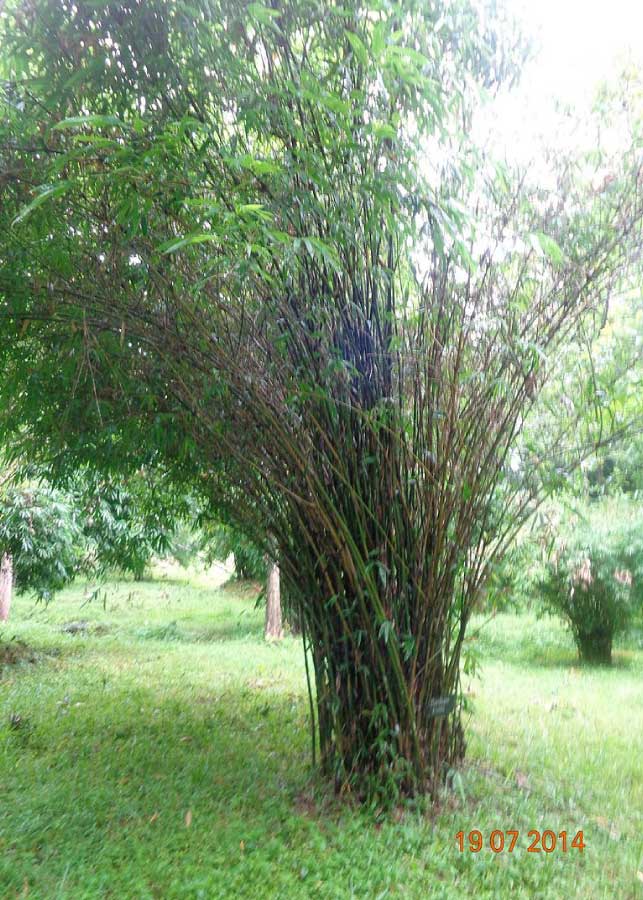
Bamboo is the largest member of the grass family. Some species of bamboo can grow 90 cm (3 ft.) in one day! Indian Timber Bamboo is a particularly useful species of bamboo. As its name suggests, it is used to make furniture. It is also used to make paper and musical instruments. It grows in South Asian rainforests.
Vanilla Orchid
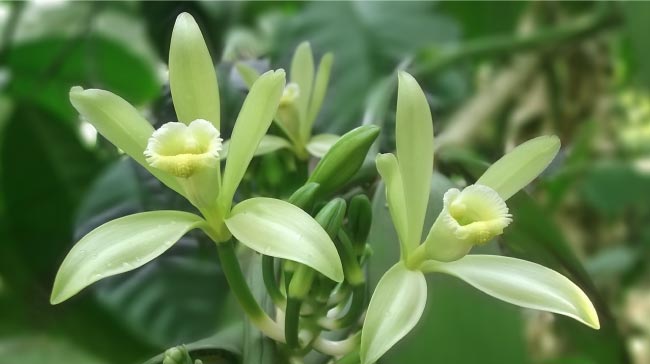
The vanilla orchid was first used as a flavouring by the Aztecs. Today, the word 'vanilla' is usually used to describe a flavour, rather than the plant from which it comes. Vanilla orchids grow like vines, climbing up other trees.
Wild vanilla orchids are pollinated by hummingbirds and melipona bees. They grow in Central and South America.
Bucket Orchid
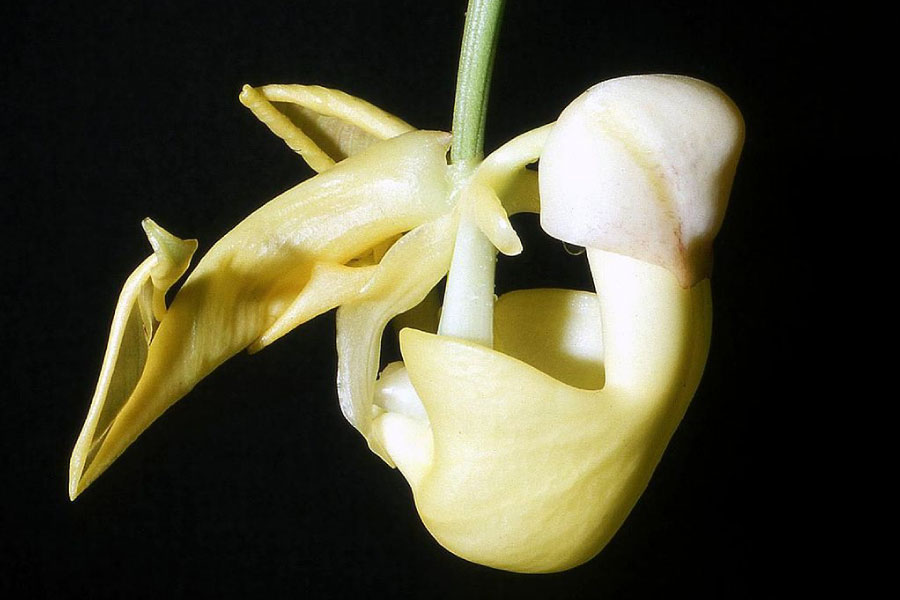
Plants in the genus Coryanthes, also known as Bucket orchids, rely on bees known as orchid bees for pollination. In order to get the bees' help, the plants offer the insects a reward: a specially scented substance that can be used by male bees to attract females.
The male bee is first attracted by the flower's scent. As it tries to get to the sweet-smelling, female-attracting liquid, it will occasionally fall into the flower's 'bucket'; a special chamber inside the body of the flower.
The only way out of the bucket is through a part of the flower that attaches pollen to the bee's body. After making its escape, the bee will then pollinate any other bucket orchid of the same species that it visits.
The bucket orchid and the orchid bee have co-evolved; each is dependent on the other to reproduce.
Silky Oak (Grevillea robusta)
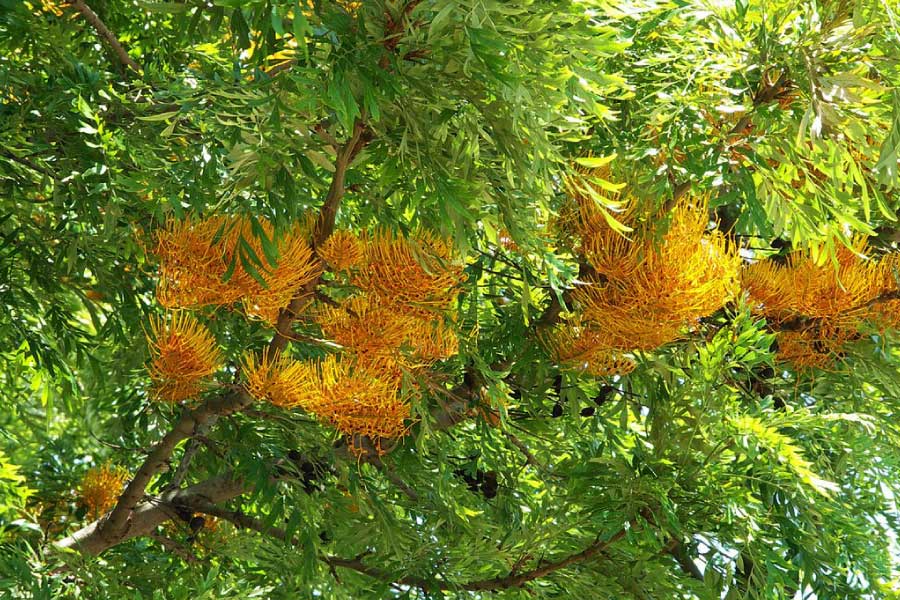
The silky oak is a large tree that grows in Australian rainforests. It is not closely related to true oak trees. Its timber is resistant to rot, and is used in carpentry and joinery.
Tualang (Koompassia Excelsa)
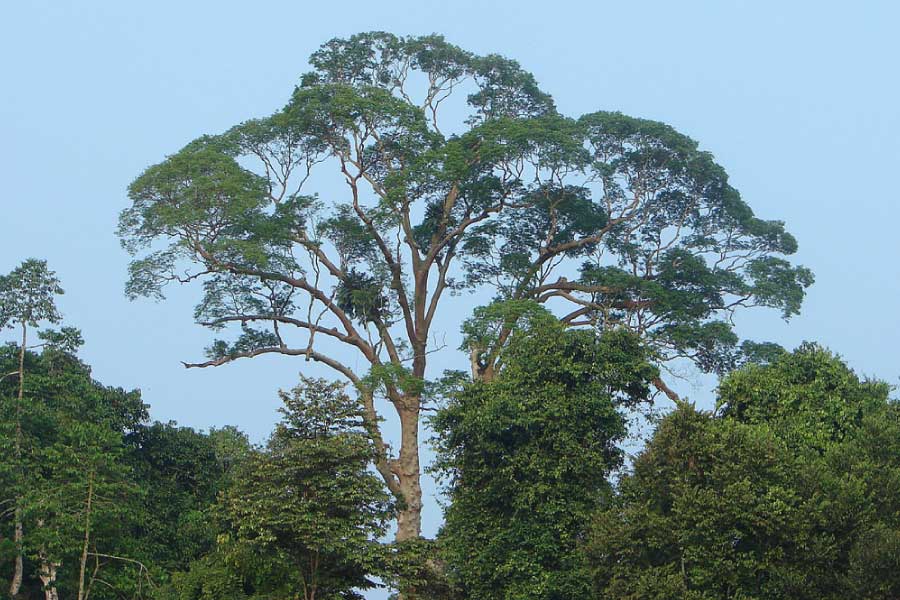
Tualang trees grow in the rainforests of Southeast Asia. Countries in which they are found include Thailand, Indonesia and Malaysia. Growing to heights of over 80m (262 ft.), tualangs are among the tallest of all rainforest trees. They tower over the other trees in the forest, forming the emergent layer – the top layer of the rainforest.
Tualangs have very smooth bark, making them difficult for animals to climb. This is beneficial to the giant honey bee, an insect that nests high in the tree's branches.
Tualang trees have buttress roots, making them both more stable and able to reach more nutrients.
Strangler Figs
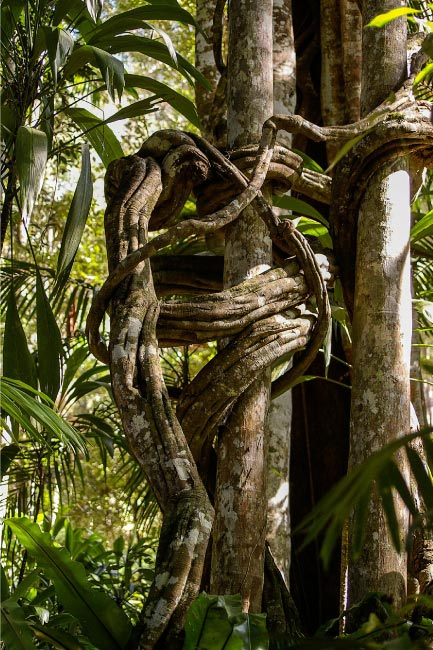
Many epiphytes avoid harming the plants on which they grow. This isn't the case with strangler figs, which kill the host plants.
A strangler fig begins life in the branches of another tree. As the fig grows, its roots descend to the forest floor. Its stem then wraps around the host tree, forming a lattice. The fig is now able to capture more sunlight and draw up more nutrients than its host, which eventually dies.
The strangler fig lattice, which is often formed by more than one fig, is by then strong enough to support its own weight. It remains standing even when the host tree has rotted away.
The strangler fig is an extremely important plant in the rainforest ecosystem. Its fruit is food for many rainforest animals.
Corpse Flower (Rafflesia arnoldii)
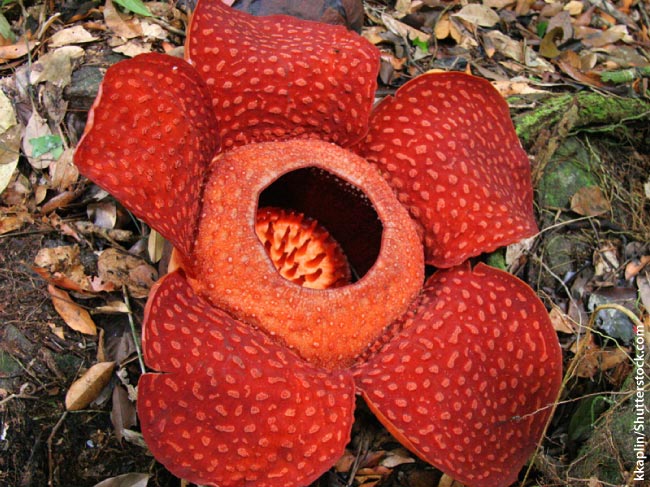
The Rafflesia arnoldii has the biggest flower in the world. This rare plant grows on vines that cross the forest floor. It is found in the rainforests of Borneo and Sumatra.
Rafflesia arnoldii flowers can reach 1 m (3 ft.) in diameter. They produce a smell like rotting flesh, which is how they got the name 'Corpse Flower'. This scent attracts the flies which will pollinate the flower.
Pitcher Plants
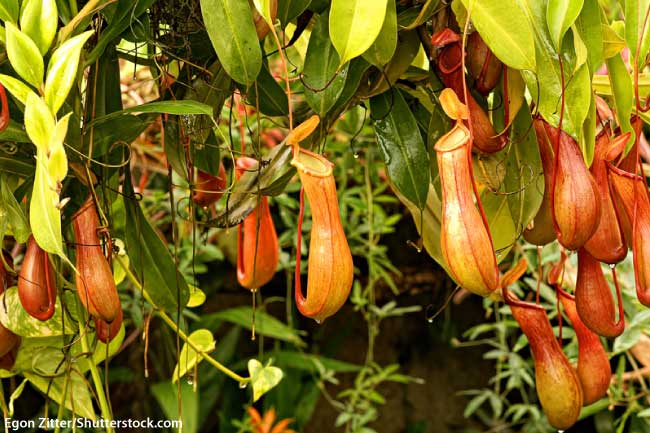
No tropical rainforest plants list would be complete without a carnivorous plant! Pitcher plants have evolved to prey on insects, and are found in areas in which the soil is low in nutrients.
There are many different types of pitcher plant; all work in the same way. Insects fall into the plant's tube-like body after having been lured in with nectar or tempting scents. The insects are prevented from escaping by hairs in the sides of the tube.
The insects eventually drown in a pool of liquid at the bottom of the tube. The plant draws nutrients from bodies of their prey.
Some of the best-known pitcher plants are those of genus Nepenthes.
Heliconia
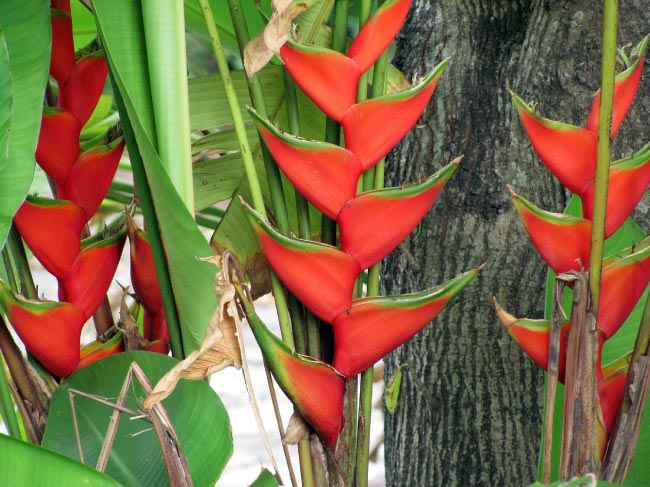
Heliconias are flowering plants found in the tropical rainforests of the Americas. They grow on the forest floor, and are pollinated by hummingbirds attracted by their brightly-colored flowers.
Heliconias are popular ornamental plants in many parts of the world. They are also known as 'lobster claws' due to the shape of their flowers.
Kapok (Ceiba pentandra)
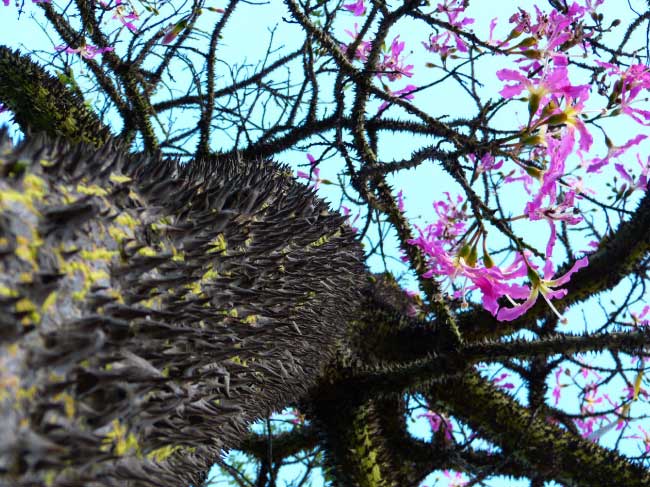
Kapok trees are tall rainforest trees whose highest branches form part of the emergent layer. Kapoks have buttress roots. Kapok trees are found in the tropical rainforests of South America, Asia and Africa.
Durian (Genus: Durio)
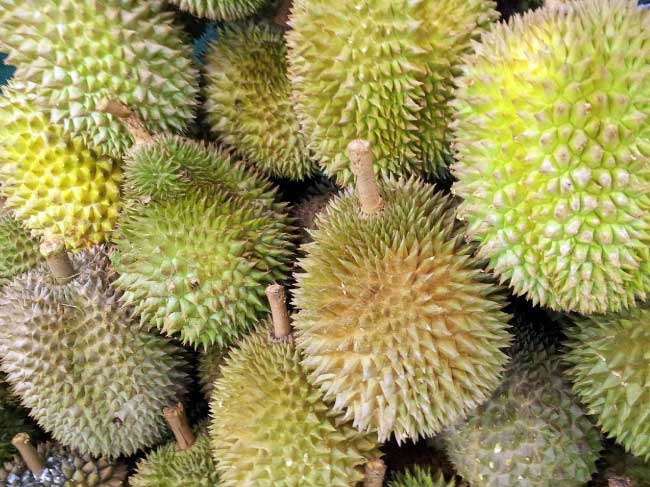
Durian trees grow in Southeast Asia. Their fruit is famous for being very strong-smelling. Some people like the smell, but others find it repulsive! Despite this, the fruit is a popular food.
Mahogany (Genus: Swietenia)
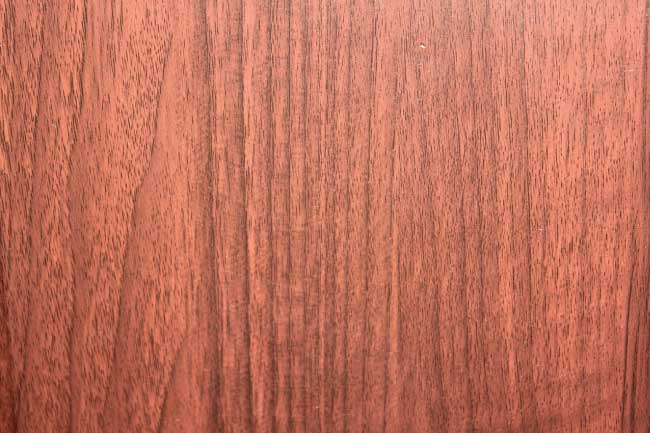
Trees of the genus Swietenia are harvested for their wood, which is called mahogany. This red-brown wood is valued for its beauty and colour. Swietenia trees are native to the rainforests of the Americas.
Tropical Rainforest Plants List: Conclusion
This tropical rainforest plants list includes flowers with special adaptations, trees with unusual root structures, and many plants that are used by man either for food or to make other goods and products.
Although no list of this type can hope to include all of the plants in the rainforest, we hope that we've provided you with an idea of the lives and uses of many varied plants found in tropical regions.
- You can find out more about tropical rainforest plants here: Plants of the tropical rainforest.
- Want to discover more? Visit our main rainforest facts page, where you can find out amazing facts about the world's rainforests.
Source: https://www.activewild.com/tropical-rainforest-plants-list/
0 Response to "Pics of the Tropical Rainforest Pics of the Tropical Rainforest Easy to Draw"
Post a Comment